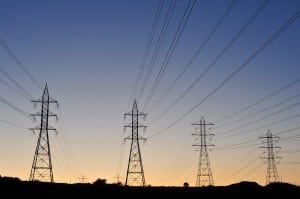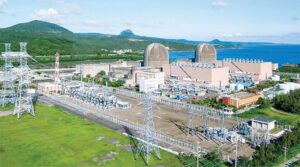Power Demand
-
Gas
Domestic Power Burn, Not LNG Exports, Is the Real Culprit Driving Natural Gas Price Volatility
From pandemic shut-ins to production booms, arctic blasts to record heatwaves, the U.S. gas market in the 2020s has been volatile. But while many analyses have pointed the finger at increases in liquefied
-
Offshore Wind
Hybridization of Offshore Wind
Sponsored by:Siemens Energy GlobalThe white paper underscores the transformative potential of hybridizing offshore wind energy, emphasizing the integration of hybrid technologies, e.g. energy storage systems (BESS), to enhance the reliability, stability, and economic feasibility of offshore wind farms. This approach mitigates the intermittency of wind power, resulting in a more consistent and predictable energy output. By contributing to grid stability […]
Tagged in: -
Hybrid Power
Hybridization of Power Generation
Sponsored by:Siemens EnergyThe whitepaper discusses the integration of hybrid power plants in the energy sector, emphasizing their role in addressing the challenges of renewable energy integration. It highlights the importance of hybrid plants in meeting global energy demands by combining multiple power generation and storage strategies. The document outlines the benefits of flexibility, cost reduction, and emission control provided […]
Tagged in: -
Markets
PJM’s Record-High Capacity Prices Spark Sector Reckoning as Market Signals, Policy Battles Intensify
Capacity prices in PJM Interconnection’s latest auction spiked to the market’s price ceiling, hitting $329.17/MW-day across the board for the 2026/2027 delivery year—the maximum allowed under new Federal Energy Regulatory Commission (FERC) rules. The regional transmission organization’s (RTO’s) competitive Base Residual Auction (BRA), conducted on July 9, 2025, and released on July 22, secured 134,311 […]
-
Commentary
Beyond Co-Location: The Emerging Opportunity for Vertically Integrated Utilities in the Data Center Boom
The explosive growth of hyperscale data centers is reshaping the power sector at unprecedented speed. In just a few short years, load requests from data center operators have gone from occasional filings to a full-on wave of gigawatt-scale development across North America. While much attention has been paid to the trend of co-locating data centers […]
-
Data Centers
PPL, Blackstone Launch Major Gas-Fired Generation Venture Targeting Data Center Surge in Pennsylvania
PPL Corp. and investment giant Blackstone Infrastructure have formed a joint venture to build, own, and operate natural gas combined-cycle generation plants in Pennsylvania specifically designed to serve data center loads through long-term energy service agreements (ESAs). The partnership, unveiled at the Pennsylvania Energy and Innovation Summit in Pittsburgh on July 15, represents a strategic […]
-
Press Releases
South Texas Electric Cooperative Issues Request for Proposals to Meet Long-Term Capacity and Energy Needs
Proposals of up to 500 MW of firm, dispatchable capacity and associated energy requested. NURSERY, Texas, July 14, 2025 — South Texas Electric Cooperative Inc. (STEC) today issued a request for proposals (RFP) through which it seeks to obtain long-term generating capacity and associated energy. The RFP solicits bids for up to 500 megawatts (MW) […]
Tagged in: -
Data Centers
Regulator Approves AEP Ohio’s Landmark Data Center Tariff
The Public Utilities Commission of Ohio (PUCO) has approved a landmark tariff structure requiring large new data center customers to pay for a minimum of 85% of their subscribed electricity usage—regardless of actual consumption—for up to 12 years. The measure marks a pivotal step in Ohio’s efforts to address surging demand from hyperscale data centers […]
-
Trends
Renewable Energy Surges, but Grid Crisis Looms as Demand Grows and Policies Shift
The U.S. electric power sector is experiencing a surge in renewable energy deployment, yet the grid faces mounting pressure from skyrocketing demand and shifting federal policies. As data centers and
-
Power
Taiwan’s Tech Industry Driving Country’s Energy Demand
Taiwan is among several countries experiencing an energy crisis, with its supply of power struggling to keep up with demand from a rapidly growing high-tech sector. The country has long depended on imported










